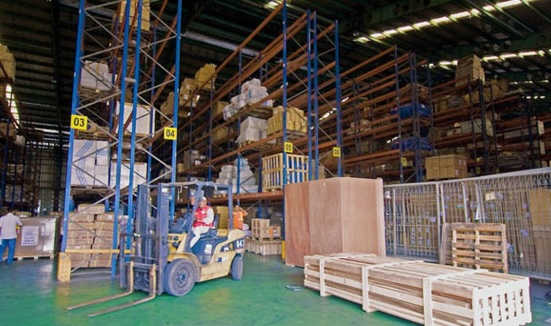
As communication plays an indispensable role, coaxial cables can provide unparalleled performance to ensure automation and efficiency throughout the materials handling operations. Let’s take a better look at the role of coaxial cables in this sector:
Coaxial cables aren’t of the same kind. They help you bridge communication between various devices and assist you in establishing real-time communication. Therefore, coaxial cable assists in a wide variety of tasks like inventory management, tracking, monitoring and much more. With high-speed performance and transmission, you improve efficiency and reduce downtime for the operations.
Automation is becoming a prominent part of various industries, including materials handling. Coaxial cables, with a wide range of wiring and connector options, provide a proper system. You could compare it to a human nervous system, but for machines. Thus, it provides connectivity from sensors to controllers. It streamlines operations for machine operations, deliveries, and transfer.
Materials handling involves the utilisation of radio frequency identification (RFID) and high-frequency sensors for various operations. Coaxial cables provide optimum shielding and prevent interference from outside sources. Moreover, it offers insulation properties that assist in maintaining signal integrity and assists in proper signal expansion.
There are various kinds of materials, boxes, drums, and other items used in material handling. Moreover, there will be exposure to dust, moisture, mould, and many other elements that can impact the quality of the cable, signal transfer, and durability. Coaxial cables from RS are designed to withstand extreme conditions and often have various insulation, shielding and propeller material compositions to be long-lasting and highly durable. Thus, they can be used in extreme environments, harsh conditions, and other challenging sectors.
Furthermore, materials handling areas, like warehouses, often require precise monitoring systems. Surveillance and security play a pivotal role, especially in the installation and placement of cameras. Often, high-quality cameras are used to provide real-time feed with high-quality streaming, and coaxial cables are utilised to prevent interference and optimise the quality.
Correlatively, just like connecting various devices and sensors, coaxial cables play a prominent role in measurement. There are various measuring devices that can be used freehand or with batteries to record them in the inventory. However, advanced materials handling infrastructure often utilises sensors and weight scales to provide better and optimum insights. Storage space calculation can be automatic on a digitalised system with real-time inventory updates. It all helps reduce errors and downtime to provide maximum efficiency.
Communication is the backbone of material handling as multiple personnel are working continually in unison to provide optimum efficacy. Moreover, automated machines, forklifts, and many other tools are also used to provide proper handling. Therefore, two-way radios, wireless communication, telephones, and the internet all connectivity options for communication play a vital role. Coaxial cables provide robust performance in the upkeep of this information flow.
Coaxial cables make it easier to upkeep with the latest technology and connectivity options. Even if the network connectivity changes from 3G to 5G, even at 7G, you will need everlasting coaxial cables. Therefore, they are futureproof and provide proper layout and infrastructure for the new advancements without incurring any significant monetary loss or tech overhaul.